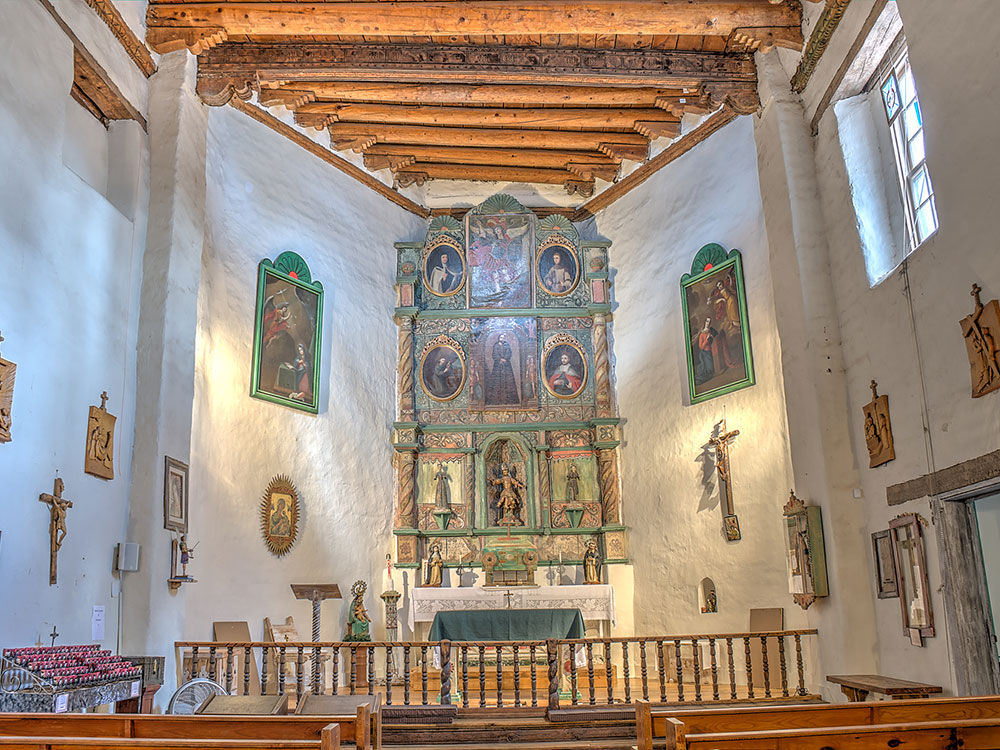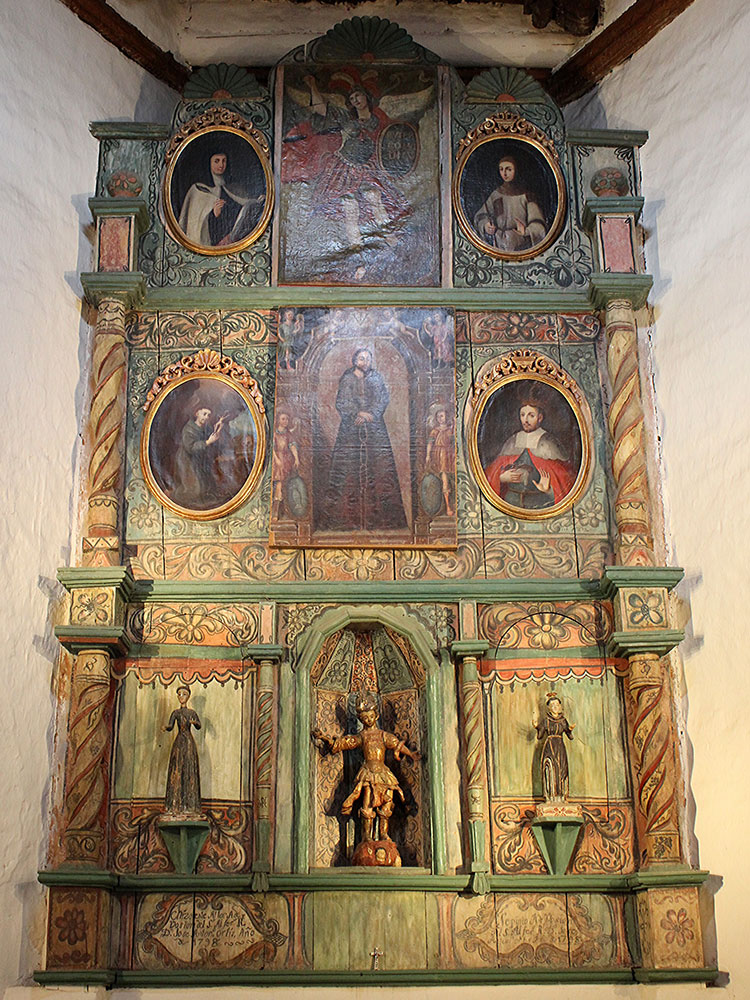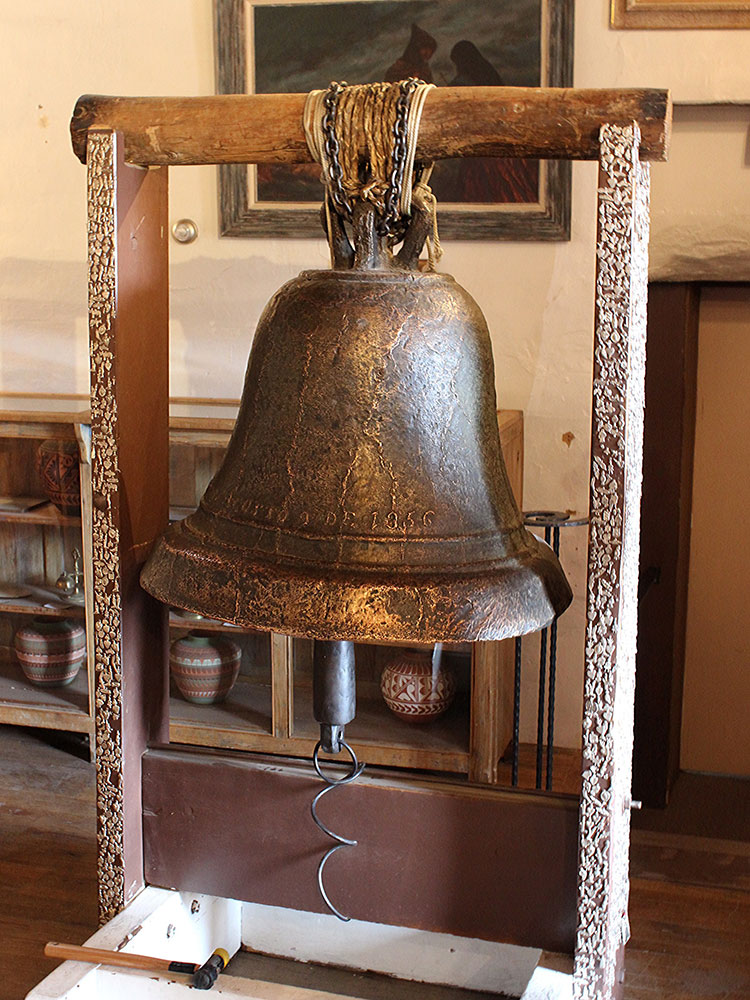Spanish colonial mission church in Santa Fe, originally built around 1610, it is often referred to as the oldest church in the US
7am to 6pm
Summer Park Hours
May 31 to September 6
7am to 9pm
Fall to Spring Hours
September 8 to May 27
9am to 5pm
Accepts America The Beautiful Pass.
Overview
San Miguel Mission (Spanish: Misión de San Miguel), also known as San Miguel Chapel, is a Spanish colonial mission church in Santa Fe, New Mexico. Originally built around 1610, it is often referred to as the oldest church in the United States (excluding Puerto Rico), though it is likely that little of the original structure is still present. The church was rebuilt twice, once in the mid to late 17th century, and again in 1710 following the Pueblo Revolt. In both cases earlier pieces of the building may have been reused, though it is unclear to what extent. The wooden reredos, which includes a wooden statue of Saint Michael dating back to at least 1709, was added in 1798.

The church is a contributing property in the Barrio De Analco Historic District, which is a U.S. National Historic Landmark. As of 2020, weekly Mass is still offered at the chapel on Sundays.
The original San Miguel church was probably built shortly after the founding of Santa Fe in 1610 and was the first church in the new settlement. It was built across the Santa Fe River from the villa proper in an area referred to as the Barrio de Analco, which was inhabited mainly by native people including some Tlaxcalans who had accompanied the Spanish settlers from Mexico. Since missionary work was a priority for the Spaniards, they built a church to serve this population before building their own Parroquia or parish church near the Plaza. In 1630,
San Miguel Mission is constructed from adobe, with a single rectangular nave and a trapezoidal apse. The walls are approximately 5 feet (1.5 m) thick. The church interior is about 24 feet (7.3 m) wide, 70 feet (21 m) long, and 25 feet (7.6 m) high. The ceiling is supported by wooden vigas, of which two are square and are thought to date to 1710, while the remainder are round and are newer replacements. A clerestory above the sanctuary and a high window in the south wall provide light inside the church. The choir loft is supported by a heavy, corbeled beam spanning the width of the nave which in turn supports 13 perpendicular carved beams.
The front elevation of the church faces west and has a central bell tower with a single small window and a larger open void directly above the main entrance. The building is supported by five stone buttresses added in 1887, two on the front and three on the north side. To the south of the nave are a sacristy, robing room, and storage and residence areas.
The wooden reredos or altar screen dates to 1798 and is said to be the work of an unnamed artisan known as the "Laguna Santero" who was active in New Mexico between 1796 and 1808. The screen is flanked by large Solomonic columns. A niche in the center of the reredos, with its own small pair of columns, contains a wooden statue of St. Michael the Archangel wielding a sword. The statue originated in Mexico in 1709 and has been in place at least since 1776, when it was mentioned in Domínguez' inventory of the church. Directly above the statue is a large painting of Jesus from the mid-18th century which was found behind the altar screen during the 1955 renovations. At the top center is a 1745 painting of St. Michael attributed to Bernardo de Miera y Pacheco. Around these two paintings are four oval oil paintings on canvas, which are Mexican and date to the early 18th century. Clockwise from top left, they depict St. Teresa of Ávila, St. Gertrude, St. Louis, and St. Francis of Assisi. The entire reredos was painted over at some point but was later restored.
Another notable object associated with the church is the bell that hung in the bell tower prior to 1872, which is still on display inside the building. The bell is mostly copper, weighs 780 pounds (350 kg), and bears the legend
This article uses material from the Wikipedia article "San Miguel Mission", which is released under the Creative Commons Attribution-Share-Alike License 3.0

